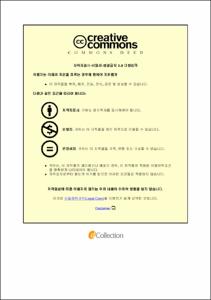딥러닝 기반의 99mTc-diethylenetriamine pentaacetic acid 신장 스캔을 이용한 신사구체 여과율 측정
- Alternative Title
- Deep learning-based prediction of split glomerular filtration rate with 99mTc-diethylenetriamine pentaacetic acid renal scan
- Abstract
- Purpose: To automate glomerular filtration rate (GFR) measurement by developing deep learning (DL) models for generating automated regions of interest (ROIs) on 99mTc-diethylenetriamine pentaacetic acid (99mTc-DTPA) renal scans and/or for directly regressing the GFR from the 99mTc-DTPA renal scans. Methods: Manually-drawn ROIs as well as the corresponding GFR values were retrieved from a Picture Archiving and Communications System were used as ground-truth (GT) (or silver standard) labels and target values, respectively. To this end, we developed two models: one using a two-dimensional U-Net convolutional neural network (CNN) architecture (ROI generator network) with multichannel input to automatically generate kidney and background ROIs, from which GFR was calculated using the Gates formula, and another model using a two-dimensional encoder CNN architecture (GFR regressor network) with multichannel input to directly predict GFR values without the need for ROIs, respectively. The agreement between GFR values from GT and DL ROIs was evaluated using Lin’s concordance correlation coefficient (CCC) and slope coefficients for linear regressor analyses. Bias and 95% limits of agreement (LOA) were assessed using Bland-Altman plots. Results: A total of 24364 scans (12821 patients) were included. Regarding the ROI generator network, we found excellent concordance between GT and DL GFR for left (CCC 0.982, 95% confidence interval [CI] 0.981–0.982; slope 1.004, 95% CI 1.003–1.004), for right (CCC 0.969, 95% CI 0.968–0.969; slope 0.954, 95% CI 0.953–0.955), and for both kidneys (CCC 0.978, 95% CI 0.978–0.979; slope 0.979, 95% CI 0.978–0.979). Bland-Altman analysis revealed minimal bias between GT and DL GFR, with mean differences of −0.2 (95% LOA −4.4–4.0), 1.4 (95% LOA −3.5–6.3) and 1.2 (95% LOA −6.5–8.8) mL/min/1.73 m² for left, right and both kidneys, respectively. Regarding the regressor network, GT and DL estimated GFR values is as follows for the left kidney (CCC 0.969, 95% CI 0.969–0.970), right kidney (CCC 0.969, 95% CI 0.968–0.969), and for both kidneys (CCC 0.972, 95% CI 0.971–0.972). Bland-Altman analysis revealed with mean differences of −0.06 (95% LOA −5.5–5.4), 0.15 (95% LOA −5.4–5.7) and 0.08 (95% LOA −8.9–9.1) mL/min/1.73 m² for left, right and both kidneys. Notably, 19960 scans (81.9%) showed an absolute difference in GFR of less than 5 mL/min/1.73 m² by the ROI generator network. Similarly, the regressor network showed an absolute difference in GFR of less than 5 mL/min/1.73 m² in 18,770 scans (77.0%). Conclusion: Our ROI generator network and GFR regressor network exhibited excellent performance in the generation of ROIs and estimate GFR on 99mTc-DTPA renal scans. This automated approach could potentially reduce manual effort and enhance the precision of GFR measurement in clinical practice.
- Issued Date
- 2024
- Awarded Date
- 2024-08
- Type
- Dissertation
- Affiliation
- 울산대학교
- Department
- 일반대학원 의과학과 의공학전공
- Advisor
- 주세경, 오정수
- Degree
- Master
- Publisher
- 울산대학교 일반대학원 의과학과 의공학전공
- Language
- eng
- Rights
- 울산대학교 논문은 저작권에 의해 보호받습니다.
- Appears in Collections:
- Medical Engineering > 1. Theses(Master)
- 파일 목록
-
-
Download
 200000811895.pdf
기타 데이터 / 1.88 MB / Adobe PDF
200000811895.pdf
기타 데이터 / 1.88 MB / Adobe PDF
-
Items in Repository are protected by copyright, with all rights reserved, unless otherwise indicated.